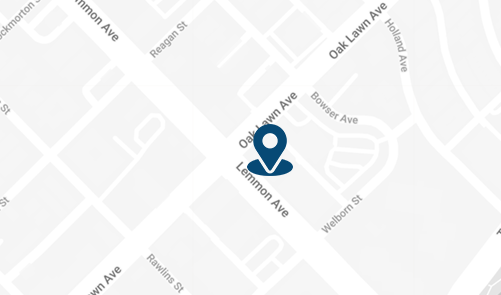By: Dr. Dev Batra | 01.30.23

A 31-year-old female presents with a visible varicose vein coursing down the length of her right leg. The patient complains of pain along the course of the vein in her anterior thigh and along her knee. The culprit vein looks quite tortuous and many of its segments are actually bulging out of the skin. If the vein weren’t so tortuous, segmental ablation would be a viable treatment option, but navigating the vein with a catheter and providing reliable closure is complicated by the numerous twists and turns. For this type of presentation, we utilize microphlebectomy techniques to remove the vein segment-by-segment, typically with very good results. Read on to learn the ins and outs of microphlebectomy and when it’s an appropriate treatment option for varicose veins.
Simple Varicose Vein Anatomy
In previous blog posts, we’ve covered the basics on segmental catheter-based approaches. These include thermal ablation techniques (laser ablation and radiofrequency ablation) and the VenaSeal™ system, which work by delivering treatment to the inside of the vein, segment-by-segment. These treatments are appropriate for most clinically significant varicose vein cases, particularly those in which the greater saphenous vein (GSV), the small saphenous vein (SSV), or the anterior accessory GSV are affected and the culprit vein maintains a consistent, not-so-tortuous profile.¹
Complex Varicose Vein Anatomy
In many cases, the anatomy of the diseased vein can deviate from this consistent profile. A patient may present with a long, bulging, tortuous vein that, from the outside, looks like a long sequence of ripples on the surface of the leg. Given this more complex profile, the endovascular vein specialist is faced with a couple of considerations – the first of which is that a segmental catheter-based approach is not ideal for the reasons described above. Fortunately, there are other tools and techniques at our disposal that may fit this need – namely, foam sclerotherapy and microphlebectomy. The second consideration is the specific anatomical profile of the culprit vein, as this determines which of these approaches makes the most sense.
Sclerotherapy describes the injection of a sclerosant agent into the veins, which damages the internal lining of the vein and causes blood to clot within the vein. When injected in liquid form, much of the sclerosant becomes diluted by the blood in large veins, which is why foam sclerotherapy is used. In the instance of foam sclerotherapy, the sclerotherapy solution is mixed with gas to create a foam that completely fills the vein when injected.²
Because of its injection delivery mechanism, foam sclerotherapy is a particularly good option if the target vein is short (requiring less than 10cc of the foam) and lies at a significant depth beneath the skin. In the opposite case of a long vein and/or a vein that bulges out from the skin, sclerotherapy may unnecessarily increase the patient’s risk of phlebitis. In most cases, phlebitis is easily managed with over-the-counter non-steroidal anti-inflammatory medication, but we’d rather eliminate the risk of any unnecessary complications altogether.
When is Microphlebectomy Appropriate
When a varicose vein is long, bulging, and close to the surface of the skin, microphlebectomy might provide the best path forward. Microphlebectomy – also called ambulatory phlebectomy, stab phlebectomy, and stab avulsion – is a technique in which very small incisions (less than ¼ inch) are made in the skin and varicose veins are removed in segments. Microhlebectomy should not be confused with vein stripping, which describes the surgical removal of a major vein using a vein-stripping device.
For every vein segment removed, a tiny incision or puncture is made to access the vein. A hook instrument is then used to expose the vein, after which the vein is severed and removed through the incision.³ Once healed, incision points are virtually undetectable.
This mechanism of action of microphlebectomy also makes it useful to selectively treat branching vessels following catheter-based treatment of major veins (such as the GSV or the SVR). Between 30% and 60% of individuals treated with catheter-based techniques require follow-up sclerotherapy or microphlebectomy to completely eliminate the systemic consequences of varicose vein disease, and this practice is well-supported by clinical evidence.⁴⁻⁶

Excellent Results in the Right Patients
At the beginning of this article, we show firsthand that microphlebectomy can yield excellent results in the right patients. To corroborate our anecdotal experience, we dug into the evidence to see how microphlebectomy performs at scale. The most recent randomized controlled trial looking at microphlebectomy as a stand-alone therapy was published in 2004. Aremu and colleagues performed conventional microphlebectomy procedures in 100 legs with varicosities below and above the knee and observed healing at 6 weeks, 26 weeks, and 52 weeks following the procedure. Based on satisfaction scores, about 90% of individuals were ‘very satisfied’ with treatment at all time points, and over 85% of individuals responded “yes” when asked, “Would you recommend this operation to a friend?” ⁷ These are compelling findings and continue to support the use of microphlebectomy in the treatment of varicose veins.
In most cases, we’re able to address large varicose veins with minimally invasive catheter-based techniques. But for more complex varicosities and small branching veins, microphlebectomy is an important technique in our repertoire to attain symptomatic relief and cosmetic resolution.
About the Author
Dr. Dev Batra, M.D. is a vein specialist and founding partner of Texas Vascular Institute. Holding board certifications in radiology and vascular & interventional radiology, he is well-versed in vein issues and has been voted one of D-Magazine’s best doctors in Dallas for three years running.
This blog post was written with research and editorial assistance from OnChart™.
References
[1] Joh, J. H., Kim, W.-S., Jung, I. M., Park, K.-H., Lee, T., Kang, J. M., & Consensus Working Group. (2014). Consensus for the Treatment of Varicose Vein with Radiofrequency Ablation. Vascular Specialist International, 30(4), 105–12.
[2] Perrin, M. (2012). History of venous surgery (3). Phlebolymphology, 19(2), 59–67.
[3] Muller R. Traitement des varices par phlébectomie ambulatoire. Phlébologie 1966;19:277-9
[4] Hager, E. S., Ozvath, K. J., & Dillavou, E. D. (2017). Evidence summary of combined saphenous ablation and treatment of varicosities versus staged phlebectomy. Journal of Vascular Surgery: Venous and Lymphatic Disorders, 5(1), 134–137.
[5] El-Sheikha, J., Nandhra, S., Carradice, D., Wallace, T., Samuel, N., Smith, G. E., & Chetter, I. C. (2014). Clinical outcomes and quality of life 5 years after a randomized trial of concomitant or sequential phlebectomy following endovenous laser ablation for varicose veins. British Journal of Surgery, 101(9), 1093–1097.
[6] Lane, T. R. A., Kelleher, D., Shepherd, A. C., Franklin, I. J., & Davies, A. H. (2015). Ambulatory Varicosity avUlsion Later or Synchronized (AVULS). Annals of Surgery, 261(4), 654–661.
[7] Aremu M, Mahendran B, Butcher W, et al. Prospective randomized controlled trial: conventional versus powered phlebectomy. J Vasc Surg. 2004;39:88-94.
Medical Disclaimer
The Materials available in the Texas Vascular Institute blog are for informational and educational purposes only and are not a substitute for the professional judgment of a healthcare professional in diagnosing and treating patients.
Read more blogs
Varicose Veins in Hurst: Expert Care at Your Doorstep
At Texas Vascular Institute (TVI), we empathize with the discomfort and worry caused by varicose veins. That's why we're here in Hurst, providing cutting-edge treatments that are customized to address your unique needs. With our team of experts wielding extensive knowledge and experience, we promise to provide the utmost care in a warm and compassionate atmosphere. Let us help you find relief and regain your confidence!
Varicose Veins in Dallas: Quality Care You Can Trust
Our exceptional team of vascular specialists are true leaders in their field, armed with years of invaluable experience. Harnessing the power of cutting-edge advancements in vein treatment, they've transformed the lives of numerous patients, liberating them from the pain and unsightly burden of varicose veins. When you choose TVI, you're opting for unparalleled care and unwavering commitment to your varicose vein needs in Dallas.
How to Get Rid of Varicose Veins in Hurst?
The causes and risk factors of varicose veins vary from genetics to age, pregnancy, obesity, and prolonged standing or sitting, among other factors. Some typical signs and possible issues include discomfort, inflammation, irritation, hemorrhage, dermatological alterations, sores, and thrombosis. You may want to seek medical attention if you experience any of the following symptoms or complications.
WHAT OUR PATIENTS
have to say
Texas Vascular Institute always appreciates feedback from our valued patients. To date, we’re thrilled to have collected 378 reviews with an average rating of 5 out of 5 stars. Please read what others are saying about Texas Vascular Institute below, and as always, we would love to collect your feedback.
Leave a Review
Amazing Practice
I'm very particular with my Healthcare and tend to be cautious with referrals to specialists. This office is amazing from the first point of contact. Their staff are friendly, professional and highly knowledgeable. Then the Dr is just as amazing as his staff, absolutely brilliant. Office manager Jessica has this office running like a well oiled machine and does so with a smile, an air of confidence, kindness and professionalism. Love this practice!!
- Richard G.

Beyond Thankful
Dr Batra and his staff are amazing! We are so grateful to have found him. Everyone is so kind and so caring and Dr Batra explains everything so well and does procedures with excellence. Beyond thankful to be under their care!!!
- Bitsy P.

Gold Standard
This is a gold standard for how a medical practice should be run. I was promptly seen at my scheduled time, my ultrasound was thorough and I received plenty of attention and care from the staff and Dr.Batra.
- Weronika L.
INSURANCE
We accept most major insurance plans. Please contact the medical office for all insurance related questions.









3500 Oak Lawn Ave, #760
Dallas, TX 75219
For Appointments: 972-798-4710
General Inquiries: 972-646-8346

809 West Harwood Rd, Suite 101,
Hurst, TX 76054
For Appointments: 972-798-4710
General Inquiries: 972-646-8346

